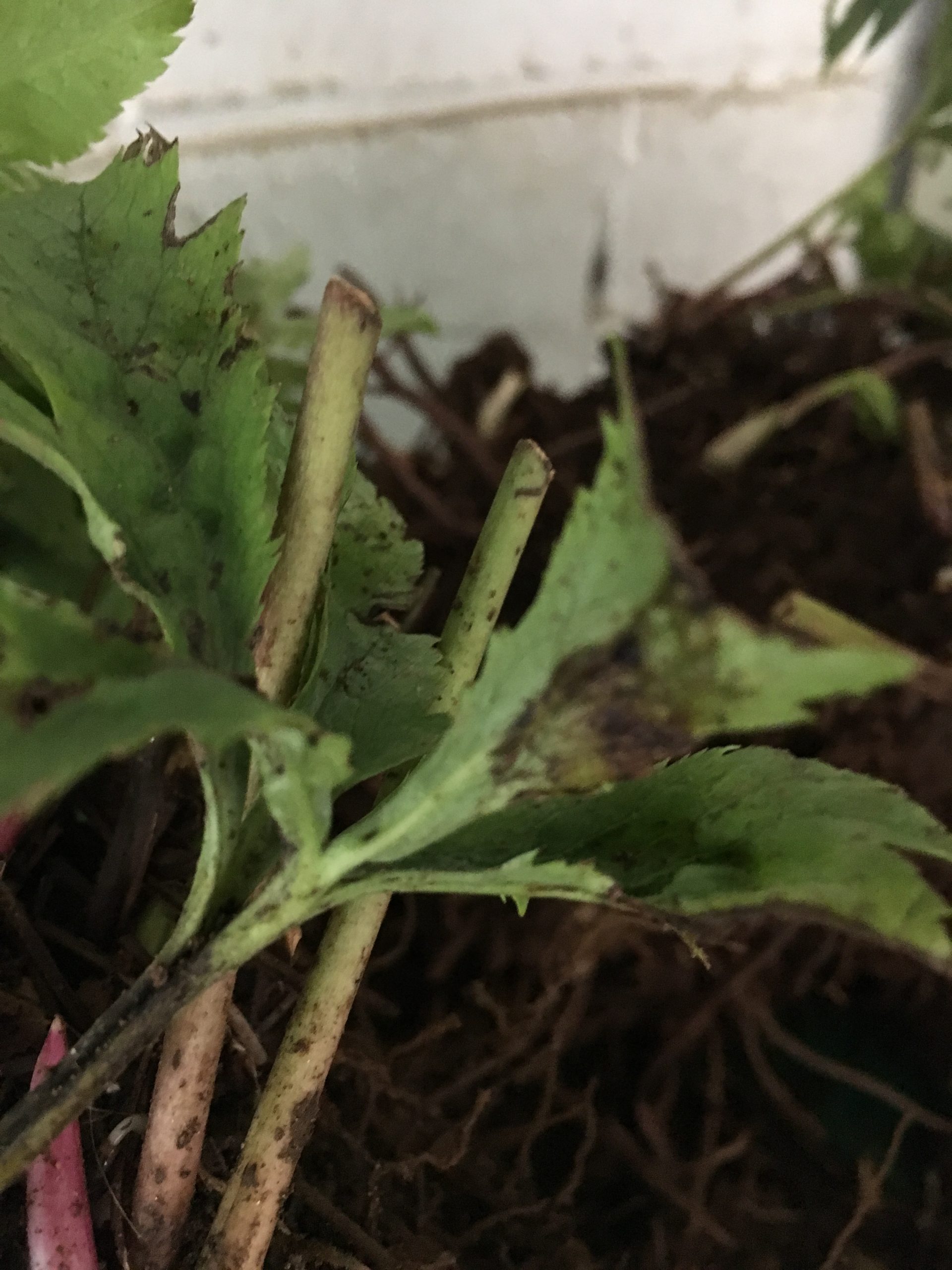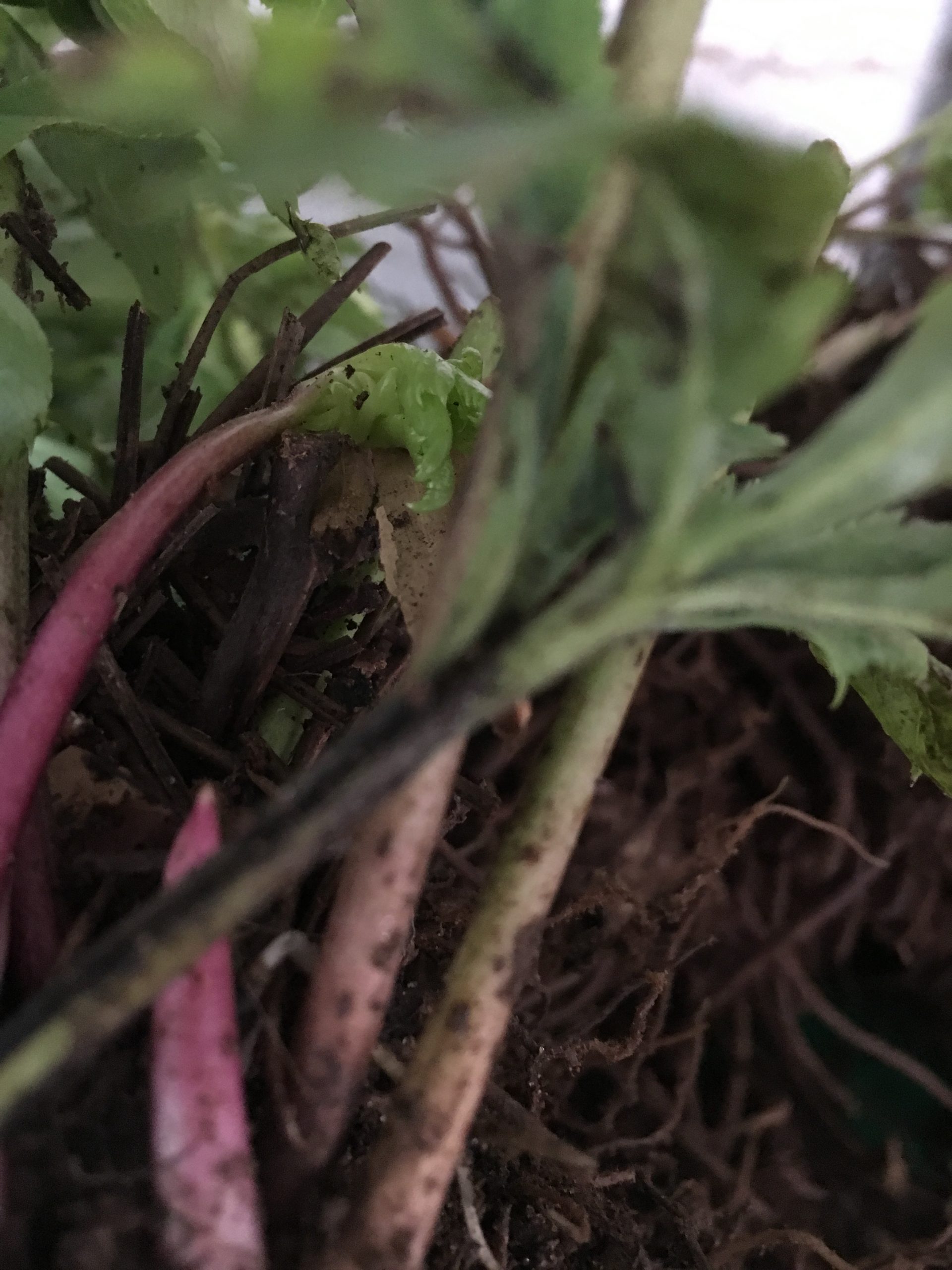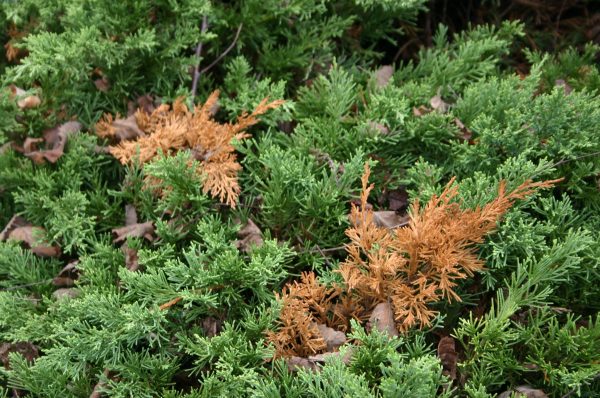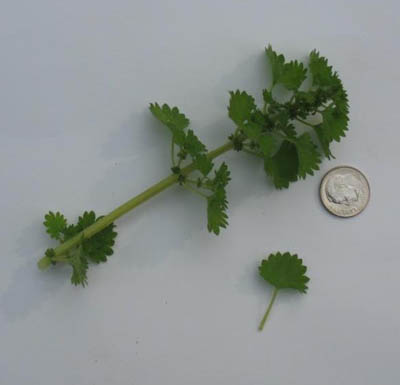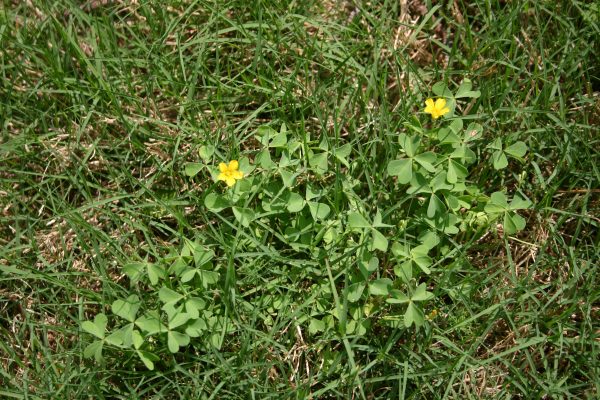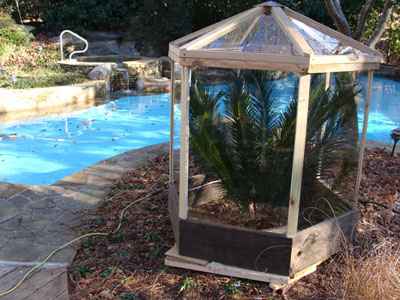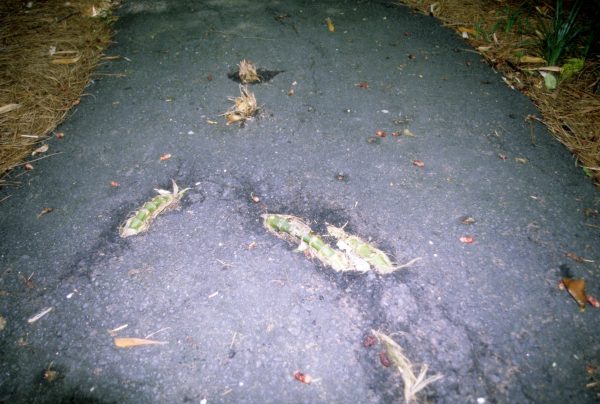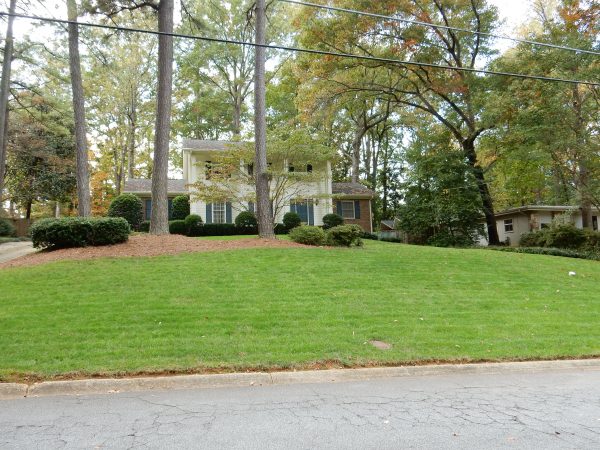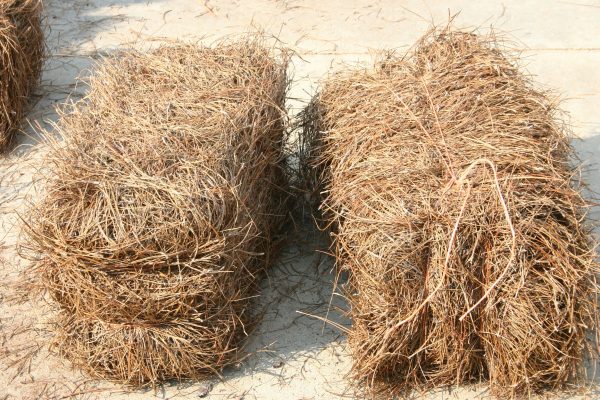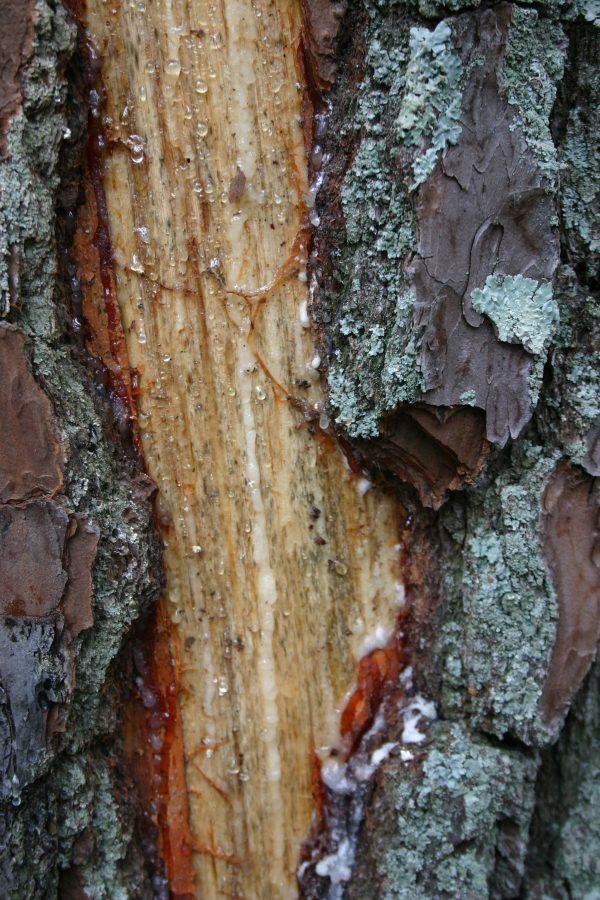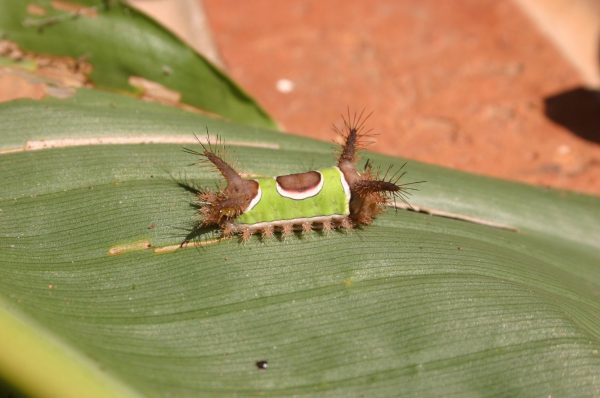Hellebore Black Death – Diagnosis
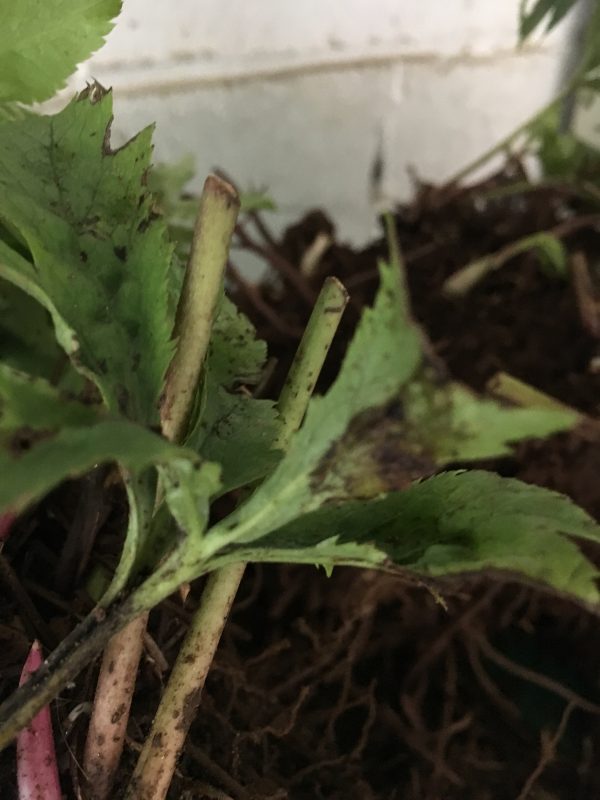
Q: I took a sample of diseased Lenten rose to the DeKalb Extension office, where it was diagnosed with “hellebore black death”, a virus. I dug up the sick plant but have found more symptoms in other plants. If it is cold this winter, will it kill the virus? If I dig up the whole bed, can I plant it again?
A: (scroll down to see UGA lab report)
Hellebore black death is not common but it has been reported in several parts of the US. It is likely caused by a virus.
Symptoms are described thusly:
Symptoms typically develop on well-established (older) plants, particularly on newly emerging foliage and on flowers (usually in mid-winter or early spring). A variety of symptoms have been observed in association with ‘black death,’ the most common including blackened leaf veins; dark brown to black streaks on petioles; black streaks on flower bracts; and stunted, brittle, brown to black new growth. Black streaks may occur as ring spots or lines and, when severe, are associated with distortion and stunting of affected plant parts. Vein marking initially appears as light-colored thin lines but progresses rapidly. Infected plants are severely stunted. Depending on the virus isolate and hybrid line, the plants may linger in poor health for several seasons, or may die within weeks. Plants may be infected for 1.5 or more years prior to developing symptoms. Symptomatic plants do not recover. In the early stages of infection, the symptoms of ‘black death’ can be confused with leaf spotting caused by Botrytis, Coniothyrium, or Phyllosticta.
Control tactics are based on the likelihood that HeNV causes ‘black death’ by means of systemic infection.
Purchase clean stock.
Growers should dig up and destroy symptomatic plants.
Control of aphids may help prevent spread of the causal agent of ‘black death.’
Cold weather won’t kill the virus. Your best course of action is to remove plants that show the symptoms above and control aphids, which can spread the virus to healthy plants. I have gotten excellent aphid control with a systemic insecticide that contains imidacloprid (click for sources).
UGA disease lab report
Dr. Jean Williams-Woodward has diagnosed your sample as follows:
Diagnosis: Hellebore black death, Carlavirus (HeNV)
Recommendation: The blackening of the leaves and black stem lesions is symptomatic for “hellebore black death”, caused by a Carlavirus, punitively called Hellebore necrosis virus (HeNV). The virus may be spread by aphids. Little is known about this virus and there is not a definitive test for it to confirm its presence. There is no control for the virus and infected plants do not recover. The virus is believed to infect plants and may have a latent period of 1.5 or more years prior to developing symptoms. Symptoms are often seen on well-established garden plants. Infected plants develop blackened leaf veins, leaf spotting, black streaking on stems and petioles, leaf distortion, and plant stunting. Infected plants should be removed and discarded. Controlling aphids may help reduce spread of the virus.
